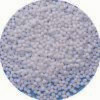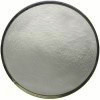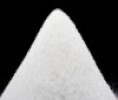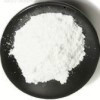Low endotoxin Beet Caster and Cane Derived Sugar, Sugar Spheres, Compressible Sugar or Direct Compacting and Tableting Sugar, Confectioner’s Sugar Manufacturers, with SDS GHS MSDS Sheet |
Supplier, Manufacturer, Exporter of Sugar Spheres, Compressible Sugar, Confectioner’s Sugar, Muby Chemicals of Mubychem Group, established in 1976, is the original manufacturers of Specialty Chemicals, Pharmaceutical Excipient, Fragrance Food & Flavor chemicals, Reagent Grade Chemicals, Shale Gas Fracturing Chemicals in India. Mubychem Group has several manufacturing facilities spread across Western India and world wide contacts and toll manufacturers. We are exporting globally to countries like USA, Canada, Europe, UAE, South Africa, Tanzania, Kenya, Egypt, Nigeria, Cameroon, Uganda, Turkey, Mexico, Brazil, Chile, Argentina, Dubai, Korea, Vietnam, Thailand, Malaysia, Indonesia, Australia, China, Germany, France, Italy, Portugal etc. The products are offered as per required specifications and in correct shape and size in mm or meshs or microns as specified by the buyer. The participating units have one or more accreditations like FDA - cGMP and GLP approval, ISO-9001 Certified, "REACH" Registered, ISO-14001, ISO/IEC 17025, ISO-22000, FSSC 22000, ISO 45001, Kosher Certified, Halal Certified, HACCP, FSSAI. We offer Commercial Pure & IP BP EP Ph Eur USP NF JP FCC Food Grade Analytical Reagent Grades of Chemicals |
| Bookmark this Web Site -- or -- Email This Page Info to a Colleague or Yourself |
Search our website here:







Low endotoxin Beet Caster and Cane Derived Sugar, Sugar Spheres, Compressible Sugar or Direct Compacting and Tableting Sugar, Confectioner’s Sugar: CAS Number: yy, EINECS EC Number: yy, Molecular Formula: yy, Molecular Weight: yy, HS Code ---**
How big is your requirement or how small
We serve it all.
Specifications, Safety Data Sheet, Manufacturing process details, Wholesale retail buy sell prices, Uses etc available on line in these pages for Low endotoxin Beet Caster and Cane Derived Sugar, Sugar Spheres, Compressible Sugar, Confectioner’s Sugar.
For SDS MSDS Sheet Click
SDS MSDS Sheet of Low endotoxin Beet Caster and Cane Derived Sugar, Sugar Spheres, Compressible Sugar or Direct Compacting and Tableting Sugar, Confectioner’s Sugar Manufacturers
Low endotoxin Sugar
Beet Caster and Cane Derived Sugar Spheres, Compressible Sugar or Direct Compacting and Tableting Sugar, Confectioner’s Sugar Pure Suppliers

We manufacture and supply Sucrose USP NF, BP EP Ph Eur and Sucrose low endotoxin and Sugar Spheres, Compressible Sugar, Confectioner’s Sugar and Caster Sugar.
Sucrose or Sugar is common sugar. It is a disaccharide, a molecule composed of two monosaccharides: glucose and fructose. Sucrose is produced naturally in plants, from which table sugar is refined. For human consumption, sucrose is extracted and refined from either sugarcane or sugar beet or Caster.
General Properties and Specifications of Sucrose or Sugar low endotoxin Beet Caster and Cane Derived:
Appearance: White crystals or powder or granules.
Assay: 99.5% minimum.
Loss on drying at105C: 0.2% maximum.
Relative density: around 1.6
Melting point: Decomposes at 186C.
Solubility: Soluble in water.

Sucrose
Specifications of Sugar Spheres USP NF Grade:
Sugar Spheres contain not less than 62.5 percent and not more than 91.5 percent of sucrose (C12H22O11), calculated on the dried basis, the remainder consisting chiefly of starch. They consist of approximately spherical particles of a labeled nominal size range. They may contain color additives permitted by the FDA for use in drugs.
Packaging and storage: Preserve in well-closed containers.
Labeling: The label states the nominal particle size range.
Identification: A 1:10 suspension gives a violet to deep blue color with iodine.
Specific rotation: not less than +41 and not more than +61 , corresponding to not less than 62.5% and not more than 91.5% of sucrose (C12H22O11), calculated on the dried basis.
Microbial limits: The Spheres meet the requirements of the tests for absence of Salmonella species, Escherichia coli, Staphylococcus aureus, and Pseudomonas aeruginosa, and the total aerobic microbial count does not exceed 100 cfu per g.
Loss on drying: Dry the Spheres at 105 for 4 hours: the material loses not more than 4.0% of its weight.
Residue on ignition: not more than 0.25%, determined on a 2.0-g specimen ignited at a temperature of 700C ± 25C.
Particle size: not less than 90% of it passes the coarser sieve size stated in the labeling; all of it passes the next coarser sieve size listed. Not more than 10% passes the finer sieve size stated in the labeling.
Heavy metals: 5 micro-g per g.

We can offer colorless and colored spheres.
Specifications of Compressible Sugar USP NF Grade:
Compressible Sugar, previously dried at 105C for 4 hours, contains not less than 95.0 percent and not more than 98.0 percent of sucrose (C12H22O11). It may contain starch, malto-dextrin, or invert sugar, and may contain a suitable lubricant.
Packaging and storage: Preserve in well-closed containers.
Identification: The specific rotation of the uninverted solution obtained in the Assay is not less than 62.6 , and the acid-inverted solution obtained in the Assay is levorotatory.
Microbial limits: It meets the requirements of the tests for the absence of Salmonella species and Escherichia coli.
Loss on drying: Dry it at 105 for 4 hours: it loses not more than 1.0% of its weight.
Residue on ignition: not more than 0.1%.
Chloride, Sulfate, Calcium, and Heavy metals: Transfer about 20 g, accurately weighed, to a 100-mL volumetric flask, add 80 mL of water, shake to dissolve the sucrose, then add water to volume, and mix. Separate the solubilized sucrose from any insoluble matter by filtration until the filtrate is sparkling clear, and use the freshly prepared, clear filtrate for the following tests.
Chloride: A 10-mL portion shows no more chloride than corresponds to 0.40 mL of 0.020 N hydrochloric acid (0.014%).
Sulfate: A 25-mL portion shows no more sulfate than corresponds to 0.50 mL of 0.020 N sulfuric acid (0.010%).
Calcium: To a 5-mL portion add 1 mL of ammonium oxalate: the solution remains clear for not less than 1 minute.
Heavy metals: To a 20-mL portion add 4 mL of water and 1 mL of 0.1 N hydrochloric acid: the limit is 5 ppm.

Compressible Sugar or
Direct Compacting and Tableting Sugar
Specifications of Confectioner's Sugar USP NF Grade:
Confectioner's Sugar is Sucrose ground together with corn starch to a fine powder. It contains not less than 95.0 percent of sucrose (C12H22O11), calculated on the dried basis.
Packaging and storage: Preserve in well-closed containers.
Identification, Specific rotation, Chloride, Calcium, Sulfate, and Heavy metals: Transfer about 20 g, accurately weighed, to a 100-mL volumetric flask, add 80 mL of water, shake to dissolve the sucrose, add water to volume, and mix. Separate the solubilized sucrose from the insoluble starch component by filtration until the filtrate is sparkling clear. Use the insoluble portion for the Identification test, and use the freshly prepared, clear filtrate for the other tests that follow.
Identification: A water slurry of the insoluble portion is colored reddish-violet to deep blue by iodine.
Specific rotation: not less than +62.6 , determined on a portion of the filtrate, corresponding to not less than 95.0% of C12H22O11, calculated on the dried basis.
Chloride: A 10-mL portion of the filtrate shows no more chloride than corresponds to 0.40 mL of 0.020 N hydrochloric acid (0.014%).
Calcium: To 5 mL of the filtrate add 5 mL of water and 1 mL of ammonium oxalate: the solution remains clear for not less than 1 minute.
Sulfate: A 25-mL portion of the filtrate shows no more sulfate than corresponds to 0.30 mL of 0.020 N sulfuric acid (0.006%).
Heavy metals: To 20 mL of the filtrate add 4 mL of water and 1 mL of 0.1 N hydrochloric acid: the limit is 5 ppm.
Microbial limits: It meets the requirements of the tests for absence of Salmonella species and Escherichia coli.
Loss on drying: Dry it at 105 for 4 hours: it loses not more than 1.0% of its weight.
Residue on ignition: not more than 0.08%.

Confectioner's Sugar
Specifications of Sucrose FCC Food Grade:
Sugar; Granulated Sugar; Cane Sugar; Beet Sugar; β-D-Fructofuranosyl-α-D-glucopyranoside
C12H22O11 Formula weight 342.30
CAS: [57-50-1]
DESCRIPTION
Sucrose, in its processed form, occurs as a white, crystalline solid. It is obtained for commercial use from sugar cane and sugar beets. It is very soluble in water, in formamide, and in dimethyl sulfoxide and is slightly soluble in ethanol.
Function: Nutritive sweetener; formulation and texturizing aid.
REQUIREMENTS
Identification: A sample meets the requirements under Optical (Specific) Rotation.
Assay: Not less than 99.8 and not more than 100.2 International Sugar Degrees.
Arsenic: Not more than 1 mg/kg.
Color: Not more than 75 IU.
Invert Sugar: Not more than 0.1%.
Lead: Not more than 0.1 mg/kg.
Loss on Drying: Not more than 0.1%.
Optical (Specific) Rotation [α]D20°: Between +65.9° and +66.7°.
Residue on Ignition: Not more than 0.15%.
Specifications of Sucrose Analytical Reagent Grade:
C12H22O11 --- Formula Weight 342.30
CAS Number 57-50-1
REQUIREMENTS
Specific rotation: +66.3 to +66.8
Insoluble matter: 0.005%
Loss on drying at 105C: 0.03%
Residue after ignition: 0.01%
Titrable acid: 0.0008 meq/g
Chloride (Cl): 0.005%
Sulfate and sulfite (as SO4): 0.005%
Heavy metals (as Pb): 5 ppm
Iron (Fe): 5 ppm
Invert sugar: 0.05%
For Original Monographs of IP Indian Pharmacopoeia BP British Pharmacopoeia USP US Pharmacopoeia FCC Food Grade product, please check with the respective web-pages or books.
We manufacture and supply as under:
Caster Sugar or Sucrose Screened
Corn Syrup Solids and Corn Syrup
Lactose Monohydrate n Anhydrous and Directly Compressible Lactose
Maltitol & Maltitol Liquid Solution
Maltose Monohydrate n Anhydrous
Sugar Spheres, Compressible Sugar Confectioner’s Sugar
Manufacturers:
MUBY CHEMICALS
Ambernath Mumbai, Ankleshwar Gujarat, India
TEL: (OFFICE) +912223770100, +912223726950
Current Date Time in India GMT+5:30
e-mail: info@mubychem.com
USA, Canada, Mexico and other American
neighbouring buyers may
e-mail: us@mubychem.com
Call toll-free 1-877-682-9243 (1-877-MUBYCHEM)

Copyright and Usual Disclaimer is Applicable.
Last
5 October, 2023






Exporters to USA Canada UAE Europe South Africa Tanzania Kenya Uganda Egypt Nigeria Turkey Mexico Brazil Argentina Chile Dubai etc.
Global or International Suppliers, Exporters, Importers, Manufacturers
I shall pass through this world, but once. If therefore, there is any good that I can do, or if there is any favor that I can show to a fellow human being, let me do it now. Let me not defer or neglect it. For I shall not tread this way again
Sugar Spheres, Compressible Sugar or Direct Compacting and Tableting Sugar, Confectioner’s Sugar SDS GHS, Safety Data Sheet
MSDS Sheet, Material Safety Data Sheet 19-Nov-20
Section 1: Chemical Product and Company Identification
Product Name & Other Names: Sugar Spheres, Compressible Sugar or Direct Compacting and Tableting Sugar, Confectioner’s Sugar.
CAS Number: 57-50-1 for the main component Sucrose.
EINECS EC Code: 200-334-9 for the main component Sucrose.
Relevant uses and uses advised against (if any): Industrial Manufacturing.
Suppliers: As per letterhead.
Section 2: Hazards Identification
GHS, Globally Harmonized System Classification in accordance with 29 CFR 1910
Hazard Class and Category Code(s), Regulation (EC) No 1272/2008 (CLP)
Not a hazardous substance or mixture according to Regulation (EC) No. 1272/2008.
This substance is not classified as dangerous according to Directive 67/548/EEC.
Labeling Regulation as per GHS & EC 1272/2008 (CLP) & GHS
| GHS Label Elements NONE |
Signal Word: None
Hazards not otherwise classified (HNOC):
May causes mild skin irritation.
May causes mild eye irritation.
Precautionary statements:
P261: Avoid breathing dust/fume/gas/mist/vapors/spray.
P262: Do not get in eyes, on skin, or on clothing.
P281: Use personal protective equipment as required.
P302+P352 - IF ON SKIN: Wash with plenty of soap and water.
P303+P361+P353 - IF ON SKIN (or hair): Remove/Take off immediately all contaminated clothing. Rinse skin with water/shower.
P304 + P340 - IF INHALED: Remove victim to fresh air and keep at rest in a position comfortable for breathing.
P305 + P351 + P338 - IF IN EYES: Rinse cautiously with water for several minutes. Remove contact lenses, if present and easy to do. Continue rinsing.
P337+313: If eye irritation persists get medical advice/attention.
Section 3: Composition and Information on Ingredients
Product Name & Other Names: Sugar Spheres, Compressible Sugar or Direct Compacting and Tableting Sugar, Confectioner’s Sugar.
CAS Number: 57-50-1 for the main component Sucrose.
EINECS EC Code: 200-334-9 for the main component Sucrose.
No component of this mixture is hazardous and need not be declared.
Section 4: First Aid Measures
Always seek medical advice after the first aid treatment.
Skin: Rinse with water. Soap may be used. Seek Medical Aid.
Eyes: Wash eyes with plenty of water for at least 15 minutes, lifting lids occasionally. Seek Medical Aid.
Inhalation: Remove to fresh air. If not breathing, give artificial respiration. If breathing is difficult, give oxygen.
Ingestion: If swallowed, induce vomiting immediately after giving two glasses of water. Never give anything by mouth to an unconscious person.
Section 5: Fire and Explosion Data
Flammability of the Product: Non-flammable.
Products of Combustion: Fumes and oxides of Carbon.
Fire Fighting Media and Instructions: Use water spray, alcohol-resistant foam, dry chemical or carbon dioxide. Wear self-contained breathing apparatus for firefighting if necessary.
Special Information: In the event of a fire, wear full protective clothing and NIOSH-approved self-contained breathing apparatus with full face piece operated in the pressure demand or other positive pressure mode. At high temperatures under fire conditions, it may produce toxic or irritating fumes. Fire-extinguishing work is done from the windward and the suitable fire-extinguishing method according to the surrounding situation is used. Uninvolved persons should evacuate to a safe place.
Section 6: Accidental Release Measures
Personal precautions, protective equipment and emergency procedures: Avoid breathing dust/fumes/gas/mist/vapors/spray. Ensure adequate ventilation. Use individual protective equipment (waterproof boots, suitable protective clothing, safety glasses, etc.). Restrict unprotected personnel from the area. Prevent any contact with hot surfaces. Do not approach facing the wind. Do not touch the spilled material.
Environmental precautions: Do not let the product enter drains, soil or water sources.
Methods and materials used for containment Cleanup procedures and Storage:
Small Spill: Use appropriate tools to put the spilled solid in a convenient waste disposal container. Finish cleaning by spreading water on the contaminated surface and dispose of according to legal requirements.
Large Spill: Contain spilled material. Do not inhale vapors, mist, or gas. Avoid dust formation. Use a shovel to put the material into a convenient waste disposal container. Finish cleaning by spreading water on the contaminated surface and allow to evacuate as per law.
Section 7: Handling and Storage
Precautions for safe handling: Apply according to good manufacturing and industrial hygiene practices. Ensure proper ventilation. Wash thoroughly after handling. Do not drink, eat or smoke while handling. Avoid contact with skin, eyes and clothing. Minimize dust generation. Avoid breathing dust/fumes/gas/mist/vapors/spray. Avoid contact with eyes, skin, and clothing. Keep container tightly closed. Avoid ingestion and inhalation. Use individual protective equipment (waterproof boots, suitable protective clothing, safety glasses, etc.). Prevent any contact with hot surfaces.
Conditions for safe storage, including any incompatibilities: Store in cool, dry and ventilated area away from heat sources and protected from sunlight in tightly closed original container. Keep air contact to a minimum. Do not leave the material container open. Store protected from heat, sparks and ignition sources and incompatible materials. Avoid contact with skin and eyes. Avoid inhalation of dust/mist/vapor. Do not store with incompatible materials like oxidizing agents.
Section 8: Exposure Controls/Personal Protection
Exposure Guidelines: This product does not contain any hazardous materials with occupational exposure limits established by the region-specific regulatory bodies.
Engineering Controls: Use process enclosures, local exhaust ventilation, or other engineering controls to keep airborne levels below recommended exposure limits. If user operations generate dust, fume or mist, use ventilation to keep exposure to airborne contaminants below the exposure limit.
Ventilation System: A system of local and/or general exhaust is recommended to keep employee exposures as low as possible. Local exhaust ventilation is generally preferred because it can control the emissions of the contaminant at its source, preventing dispersion of it into the general work area.
Personal Respirators (NIOSH Approved): For conditions of use where exposure to dust or mist is apparent and engineering controls are not feasible, a particulate respirator may be worn. For emergencies or instances where the exposure levels are not known, use a full-face positive-pressure, air-supplied respirator.
Skin Protection: Wear protective gloves and clean body-covering clothing.
Eye Protection: Use chemical safety goggles and/or full face shield where dusting or splashing of solutions is possible. Maintain eye wash fountain and quick-drench facilities in work area.
Other Control Measures: Maintain good housekeeping in work area. Dust deposits on floors and other surfaces may pick up moisture and cause the surfaces to become slippery and present safety hazards. Handle in accordance with good industrial hygiene and safety practice. Wash hands after handling.
Section 9: Physical and Chemical Properties
Physical state and appearance: Solid white crystals powder or granules.
Odor: Not available.
Odor threshold: Not available.
pH: Not available.
Relative density: Not available.
Melting point/freezing point: Not available.
Initial boiling point and boiling range: Not available.
Flash point: Not available.
Auto-ignition temperature: Not available.
Decomposition temperature: Not available.
Upper/lower flammability or explosive limits: Not available.
Vapor pressure: Not available.
Vapor density: Not available.
Evaporation rate: Not available.
Flammability (solid, gas): Not available.
Partition coefficient: n-octanol/water: Not available.
Solubility: Soluble in water.
Viscosity: Not available.
Molecular Formula: C12H22O11
Molecular Weight: 342.30
Section 10: Stability and Reactivity Data
Stability: It is stable in room temperature in closed containers under normal storage & handling.
Conditions of instability: Incompatible materials, Moisture
Incompatibility with various substances: Avoid high temperatures, sparks, open flames and moisture. Avoid contact with strong oxidizing agents and acids.
Polymerization: Will not occur.
Section 11: Toxicological Information
LD50 Oral - Rat: 29700 mg/kg for the main component Sucrose.
Carcinogenic Effects: No component of this mixture is a reported carcinogen by IARC, NTP, ACGIH, OSHA.
Reproductive toxicity: No data available.
Teratogenicity: No data available.
Developmental Effects: No data available.
Section 12: Ecological Information
Toxicity to fish: No data available.
BOD5 and COD: Not available.
Mobility: Will likely be mobile in the environment due to its water solubility.
Persistence and Degradability: No information available. However unlikely to persist.
Bioaccumulation/ Accumulation: No information available. However unlikely to accumulate.
Section 13: Disposal Considerations
Waste Disposal: Waste must be disposed of in accordance with federal, state and local environmental control regulations.
Section 14: Transport Information
DOT USA, TDG Canada & ADR/RID Europe: Not dangerous goods.
IMDG/IMO: Not dangerous goods.
IATA: Not dangerous goods.
Section 15: Other Regulatory Information
USA Regulations:
SARA 313: Not applicable
SARA 311/312 Hazard Categories: Not applicable
California Prop 65: California No Significant Risk Level: None of the chemicals in this product are listed.
Disclaimer:
**************************
Our company provides this MSDS sheet in good faith but makes no representation as to its comprehensiveness or accuracy. This SDS sheet is intended only as a guide to the appropriate precautionary handling of the material by a properly trained person using this product. The above information has been compiled from various sources and has the possibility of discrepancy and being out-dated information. Individuals receiving the information must exercise their independent judgment and do further search in determining its appropriateness for a particular purpose. In no case shall our company be liable to loss or damages by the product user.
**************************















